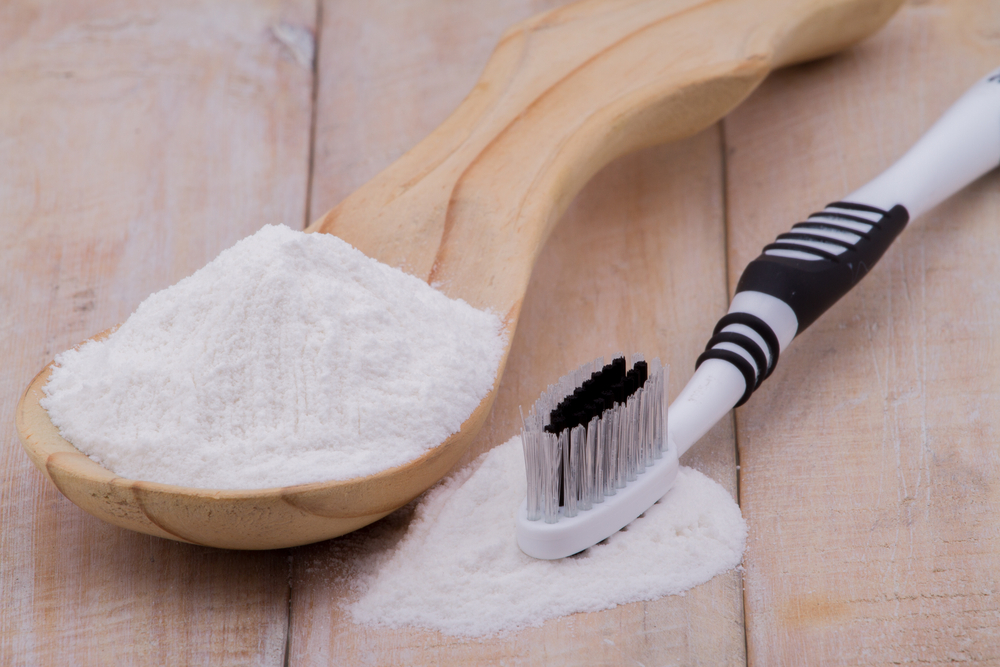Toothbrush Tips for Cold and Flu Season
Cold and flu season has arrived, and we bet you've stocked up on cough drops, tissues, and hand sanitizer. But have you thought about your toothbrush? While proper toothbrush hygiene...

A common home remedy for removing tooth stains is to brush with baking soda. But just how safe is this household product for your teeth? Baking soda is, for most, a safe way to remove surface-level stains; however, as with most products, you should use it with caution to avoid damaging your tooth enamel.
When in doubt, speak with your dentist before altering your current oral hygiene routine. Your trusted provider will be able to guide you on whether brushing with baking soda is safe for your smile, or if other methods will be more effective.
Baking soda, or sodium bicarbonate, is a chemical compound that most often appears as a fine powder. It is made up of sodium and bicarbonate ions. The alkalinity helps to eliminate tooth discoloration resulting from food and beverage consumption, smoking, and other tooth-staining substances. Due to its mild abrasiveness, baking soda can remove plaque from the tooth surface, but it may not be for everyone looking for a whiter smile.
The most common way to use baking soda to whiten your teeth is to mix it with water into a paste, and brush for two full minutes. Additionally, there are a few other useful methods for whitening with baking soda.
The most straightforward method to whiten your teeth with baking soda is to mix it with water and create a paste. Using a small bowl, mix a few drops of water with half a teaspoon of baking soda. When the two substances have created a paste, apply it to the surface of your teeth using your toothbrush or your finger. Leave it on for approximately 2 minutes and rinse with water.
Add a small amount of baking soda to your toothpaste, or purchase a ready-made toothpaste that already contains baking soda as an ingredient.
Partnering baking soda with hydrogen peroxide can be used to whiten your teeth effectively; however, you should always consult with your dentist before incorporating any household products to your oral hygiene routine. Additionally, never used more than 3% solution of hydrogen peroxide for safety.
Mix three parts water to one part apple cider vinegar to create a great teeth whitening rinse to use at home. You can also mix a small amount of apple cider vinegar with your toothpaste and brush as you usually would.
Baking soda does not contain any fluoride, so while it can whiten your smile, it cannot kill bacteria or prevent cavities. You should still use regular toothpaste to clean your teeth thoroughly, and baking soda should never completely replace the use of toothpaste.
Baking soda is abrasive by nature. Although it may be great at removing built-up plaque and surface stains, it can also cause damage to your tooth enamel if you brush too aggressively. Proper brushing technique is critical for incorporating baking soda into your routine.
Baking soda should not be used for whitening purposes more than twice a week. If you do overuse baking soda, it can lead to tooth sensitivity and increase your risk for developing cavities.
Baking soda will only whiten teeth around one to two shades. It can also cause damage if it’s not used correctly. The best and safest way to effectively whiten your smile is with professional teeth whitening. Because a trusted dentist oversees professional whitening, it is the most reliable way to achieve a whiter smile compared to at-home remedies. If you’re ready to brighten the look of your smile without the risk of causing potential damage to the surface of your teeth, contact our team at Aubrey Baudean DDS today to schedule a whitening consultation.